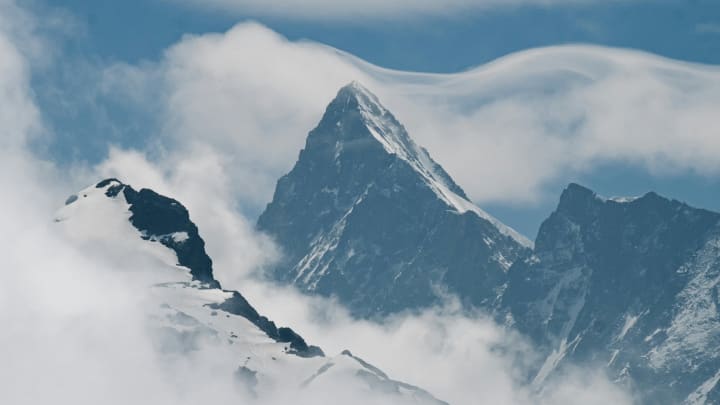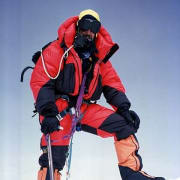The Eiger: Among The Most Iconic Climbs in the Alps

Climbing in the Alps
It’s climbing season in the Alps! Several epic climbs attract climbers from around the world to take on these challenging peaks. The Eiger, joins Mont Blanc, the Matterhorn, and Gran Paradiso as major climbing destinations this time of year, and is reviewed below.
The Mountain Monuments of the Alps
Mont Blanc, 15,781 ft.,is the highest peak in the Alps and Western Europe, Mont Blanc straddles the border between France and Italy, and is the grand monument of the Alps. Matterhorn, 14,692 ft., is one of the most recognizable peaks in the world. Its iconic pyramid shape dominates the Swiss-Italian border. Gran Paradiso, 13,323 ft., is Italy's highest peak entirely within its borders, Gran Paradiso is known for its relatively accessible climb and spectacular panoramic views, making it a popular choice for climbers seeking a high-altitude experience. Eiger, 13,015 ft., in Switzerland, presents one of the most daunting climbs in the Alps. While it offers various routes, the North Face remains a prestigious and perilous challenge for experienced mountaineers.
The Eiger
The iconic Eiger stands proudly in the Bernese Alps of Switzerland. Standing 13,015 ft., it is one of the most recognized and beautiful peaks in the world. It represents one of the most cherished and formidable challenges in the mountaineering world. The northern side of the mountain rises more than 10,000 ft. above the two valleys of Grindelwald and Lauterbrunnen, the southern side faces the large glaciers of the Jungfrau-Aletsch area - the most glaciated region in the Alps. The most ominous feature of the Eiger is the 5,900 ft. north face of rock and ice, named Nordwand, or simply The Wall. it is the largest north face in the Alps, and towers over the resort of Lleine Scherdegg at its base.
Climbing conditions on the Eiger are best during the summer months through September, with the notable exception of the treacherous North Face, known nicknamed Mordwand, which translates to the ‘Death Wall’. The Eiger’s North Face has a storied history that has attracted, and deterred, climbers for over a century. The first successful summit of the Eiger was on August 11, 1858 by Swiss climbers Christian Almer, Peter Bohren, and Charles Barrington, via the west flank and west ridge. This route is far more accommodating than the perilous North Face.
The North Face - 'Mordwand'
Attempting The Wall has been met with grim consequences. The first attempt to conquer this route failed miserably in 1935, when German climbers Karl Mehringer and Max Sedlmeyer tragically perished on the face. The Eiger is infamous for the many tragedies involving climbing expeditions. Since 1935, at least 64 climbers have died attempting the north face. The first successful ascent of the North Face came in 1938 by a German-Austrian team consisting of Anderl Heckmair, Ludwig Vörg, Heinrich Harrer, and Fritz Kasparek. This historic climb, fraught with peril and hardship, is detailed in Heinrich Harrer's book, The White Spider, which is a classic in mountaineering literature.
Since then, the North Face has been the scene of many dramatic and tragic events. The Wall rises 5,900 ft. from its base and presents numerous challenges, including falling rocks, avalanches, and rapidly changing weather conditions. Despite these dangers, The North Face attracts mountaineers annually seeking to conquer one of the most difficult and dangerous faces in the Alps.
The best time to climb the Eiger largely depends on the route, and a climber's level of expertise and experience. Generally, the climbing season for the Eiger is from late June to early September. During these months, the weather is more stable, mitigating the risk of avalanches and rockfall. The longer daylight hours and more predictable weather patterns make it the most favorable time for ascents, though the Eiger's North Face remains treacherous throughout the year. Climbers should start their ascents early in the day to avoid afternoon storms, melting ice and rockfall.
